Social media and the architecture of glass houses

People leave digital footprints on a daily basis. All around us, devices are capturing our lives as they happen, in hospitals, banks, airports, offices, supermarkets, traffic intersections. Digital eyes are watching and people are increasingly becoming comfortable being watched. Images are created everywhere, but they are not all the same: some are consciously staged, whereas others are electronically captured without the knowledge of the subject. Distinguishing between the two types of visuality becomes important here: sometimes the user is aware of being watched, and at other times unaware.
Let’s consider the architecture of looking. The function of a wall (besides shelter and protection) is to provide privacy by blocking an outsider’s view of the inside of the house. In the physical world as well as in the electronic media, the window is a mediator between spaces. The Modernist glass wall had its birth in the ‘picture window’ – a fixed window that brings the outside in only as a vista. When Le Corbusier separated the structural frame from the external facade, the detached columns allowed for unobstructed ‘ribbons’ of windows, creating a different kind of domestic environment. With the glass wall, the window was no longer a puncture: the entire wall became a window.
Altering the function of the wall caused problems. The glass wall exposed its vulnerable occupant to the prying eyes of the viewers. By doing so, it redefined the meaning of habitation. The inhabitants faced the challenge of dealing with visual exposure of their living space. Society, familiar with the earlier properties of the wall, found it hard to adjust. The house turned into a theatre set.

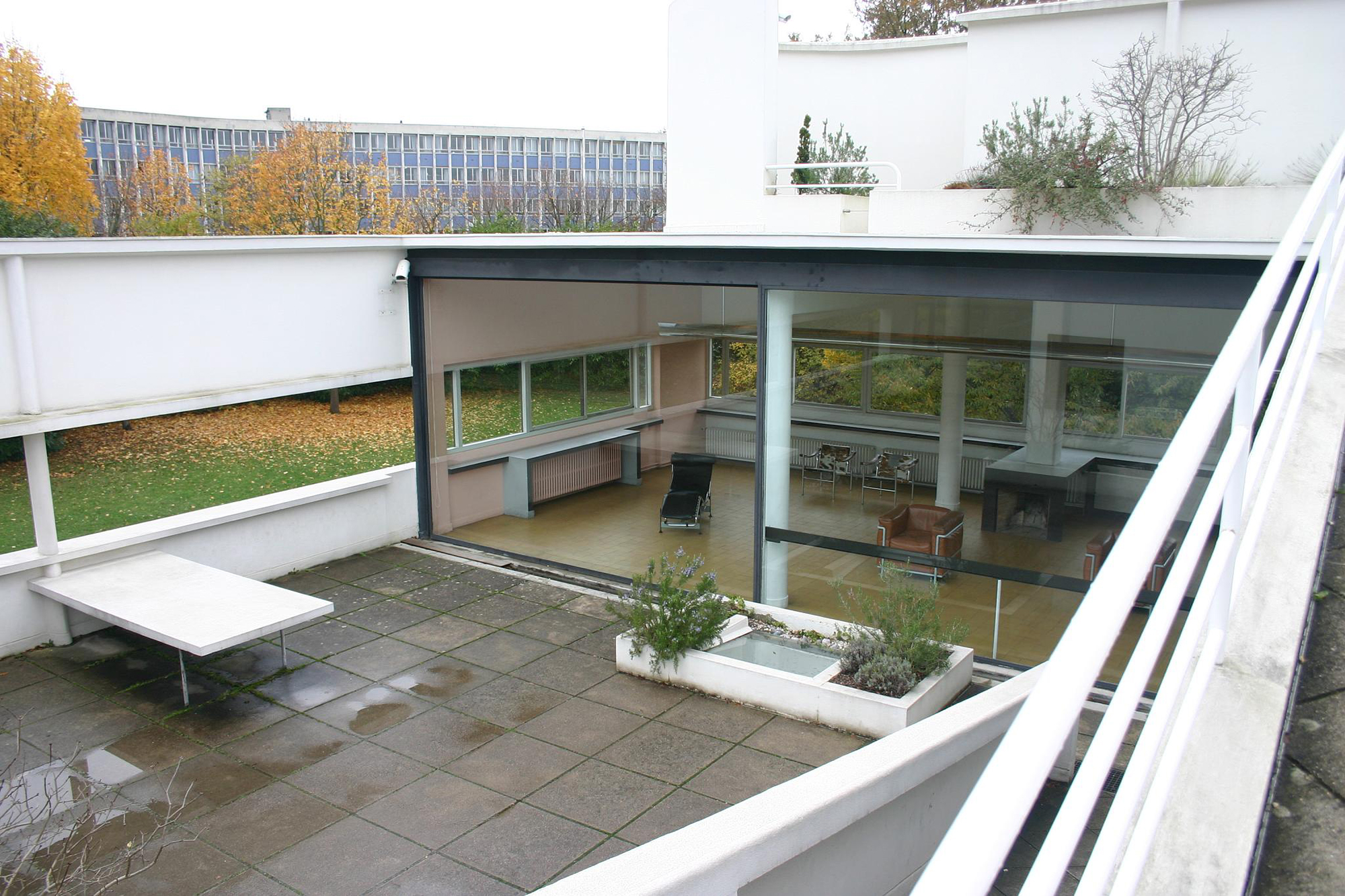
The properties of glass houses in the physical world and the interface of social networking sites in the digital world have this in common: the contents are on display, the subject is aware of being objectified. Just as the activities within a glass house, even though private, are visible to the outside world, so are the conversations on Facebook and tweets on Twitter. In this sense, a social media platform is a digital glass house. According to media scholar danah boyd, ‘digital natives’ are born into the world familiar with the idea of constantly being watched, though unaware of who is watching; she calls this ‘celebrity-style publics’. In other words, in the age of social media, we are all living in glass boxes. So let’s look at two canonical residential glass houses of the 1950s: Farnsworth House and Glass House.

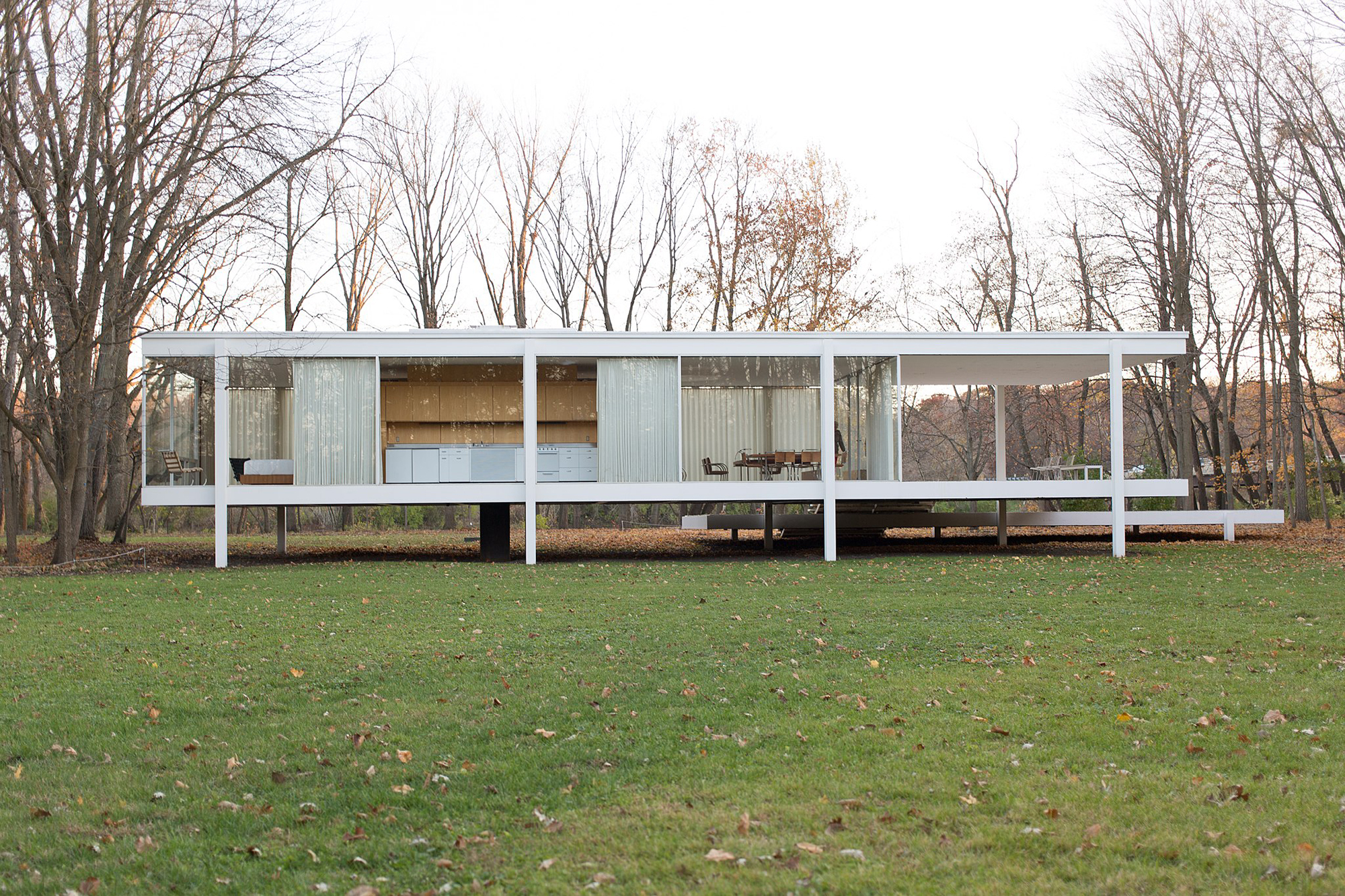
Mies van der Rohe built the Farnsworth House in 1951 for Edith Farnsworth, unmarried doctor in her mid-forties who lived and worked in Chicago. A house for a single, professional woman defied the popular idea of home in 1950s America, a time when motherhood was showcased as a full-time profession for women and houses were designed with the focus on an environment conducive to child-rearing. Childless and unmarried women were pitied as people who had missed out on the ‘real’ pleasures of life, but also feared as ‘masculine’, just as homosexuality was considered a feminisation of men – both threatened the gendered structure of American culture of the time. Almost simultaneously, architect Philip Johnson completed his Glass House in 1949. Another seminal glass house, this one intended as a residence for a gay man.
It is fair to say that post-war American considered the lifestyles of both Edith Farnsworth and Philip Johnson deviant, not fitting the codes of appropriate social behaviour. The society looked inside these two glass houses with bemusement, perhaps even loathing: the glass boxes, in turn, further showcased the vulnerability of its occupant(s).
According to Prof Helen Nissenbaum, privacy allows us to maintain varying degrees of intimacy and a variety of social relationships. It gives us the power to control what information we share with others and thereby allows us to vary our behaviour with different people. In other words, it maintains the social integrity of our relationships. When individuals do not respect norms of social propriety, Nissenbaum argues, our privacy is violated.
Behaviour is not independent of its context. Just as the architecture of a space affects human behaviour, so does the design of a digital interface. In two different eras, both the glass house and Facebook have been pivotal in challenging the concept of privacy.
Facebook started off as a small, personal college community in 2006 before quickly transforming into a larger, impersonal social platform. It enables users to voluntarily divulge personal information such as location, preferences, and activities to any of their friends and/or to the public. Facebook’s concept of ‘friend’ is anyone one ‘adds’. In an environment like this, there is no distinction between social contexts, leading to a collapse of the different worlds. This breakdown is what Helen Nissenbaum calls a loss of contextual integrity. Facebook collapses complex social relationships into a single platform – the interface of the Facebook profile. Though a person can create extremely effective privacy filters by categorising the friends into its desired categories, it is impossible to emulate the nuances of social structures of the physical world. In the physical world, it may be possible to comprehend social and architectural dynamics of space and detect the audience but in electronic media less so. danah boyd has characterized this as a problem of ‘invisible audiences,’ noting that since the audiences are generally invisible to a person when they use Facebook, it becomes difficult to display normative social behaviour. Invisible audiences deceive performers as they do not allow situational awareness. We all become ‘celebrities’ on display.
Back to the houses. The Farnsworth House was situated in the middle of a grassy meadow. Mies had anticipated the site to be uninhabited open landscape: the issue of privacy to the outside gaze was not considered. “I would think here, where everything is beautiful, and privacy is no issue, it would be a pity to erect an opaque wall between the outside and the inside. So I think we should build the house of steel and glass; in that way we’ll let the outside in.” Mies had envisioned the Farnsworth house to be without children, pets, or any other human being other than the inhabitant. In this regard, he had found the perfect client in Farnsworth. The architect was so insistent on keeping his composition of the space sacred that he preferred not even additional furniture be introduced to the house other than what he suggested.
But neither Mies nor Farnsworth had control over the surroundings of the house. In 1968, the local highway department claimed a two-acre portion of the property adjoining the house for a new, raised highway bridge over the nearby Fox River. Farnsworth sued to stop the project (realising that the placement of the house beside a highway would have led to the complete breakdown of contextual integrity), but lost in court. She sold the house in 1972.
In spite of having similar visual appearances, the two houses were situated in quite different contexts. The Glass House was located within Johnson’s own estate. Where Farnsworth got stuck in the house, with no control of her surroundings, Johnson designed the Glass House to keep it hidden from public view. Most remarkably, the transparent Glass house was paired with the opaque Guest House, built in brick, where Johnson lived for a large part of his life. In a way, Johnson tricked his audience. Though he maintained the Glass House was never meant to be considered in isolation, he deliberately focussed on the Glass House, letting people conveniently forget all about the Brick House. The Brick House housed Johnson’s private life whereas the Glass House showcased his public life. Farnsworth had no such escape; both her public and private life was on display.
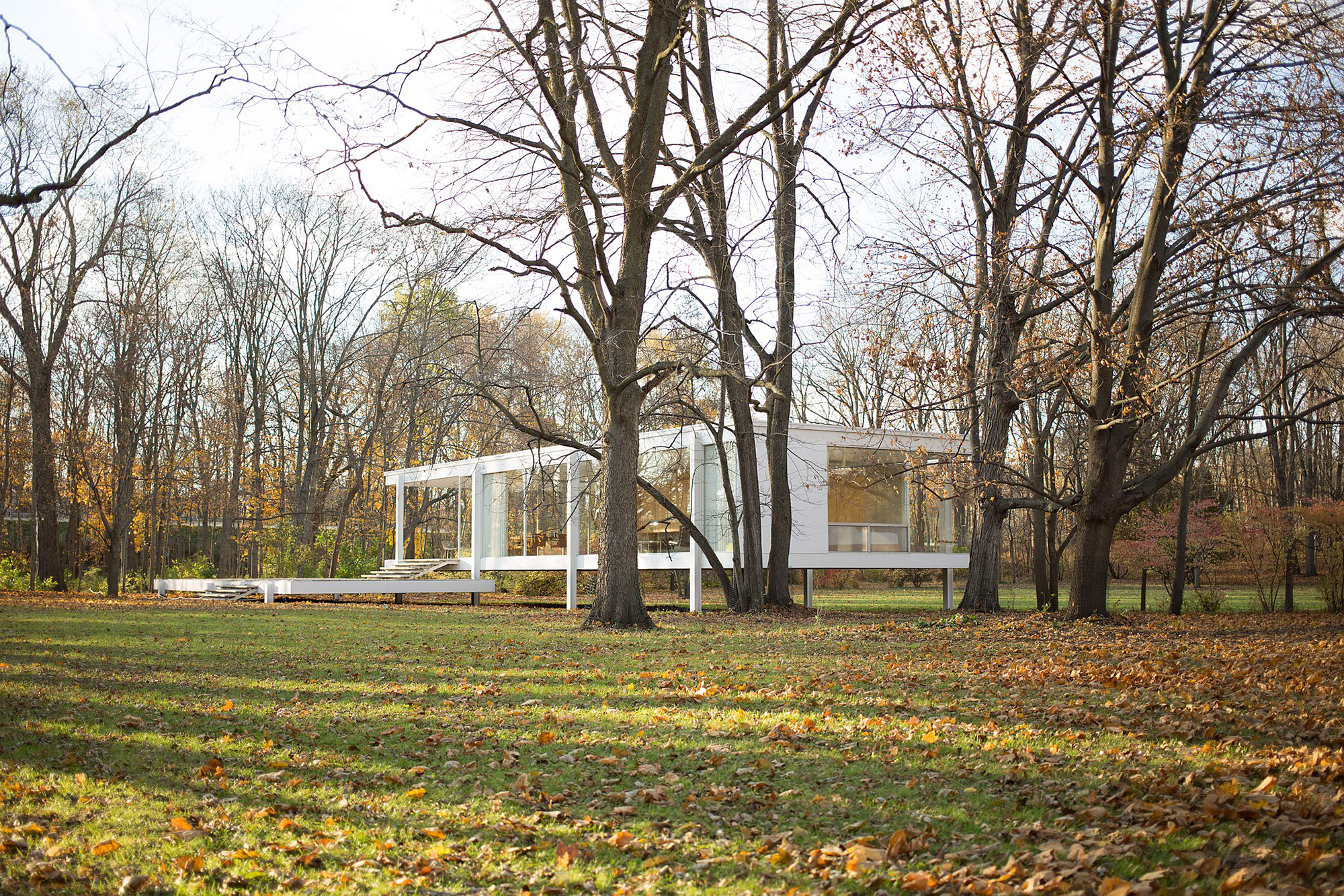

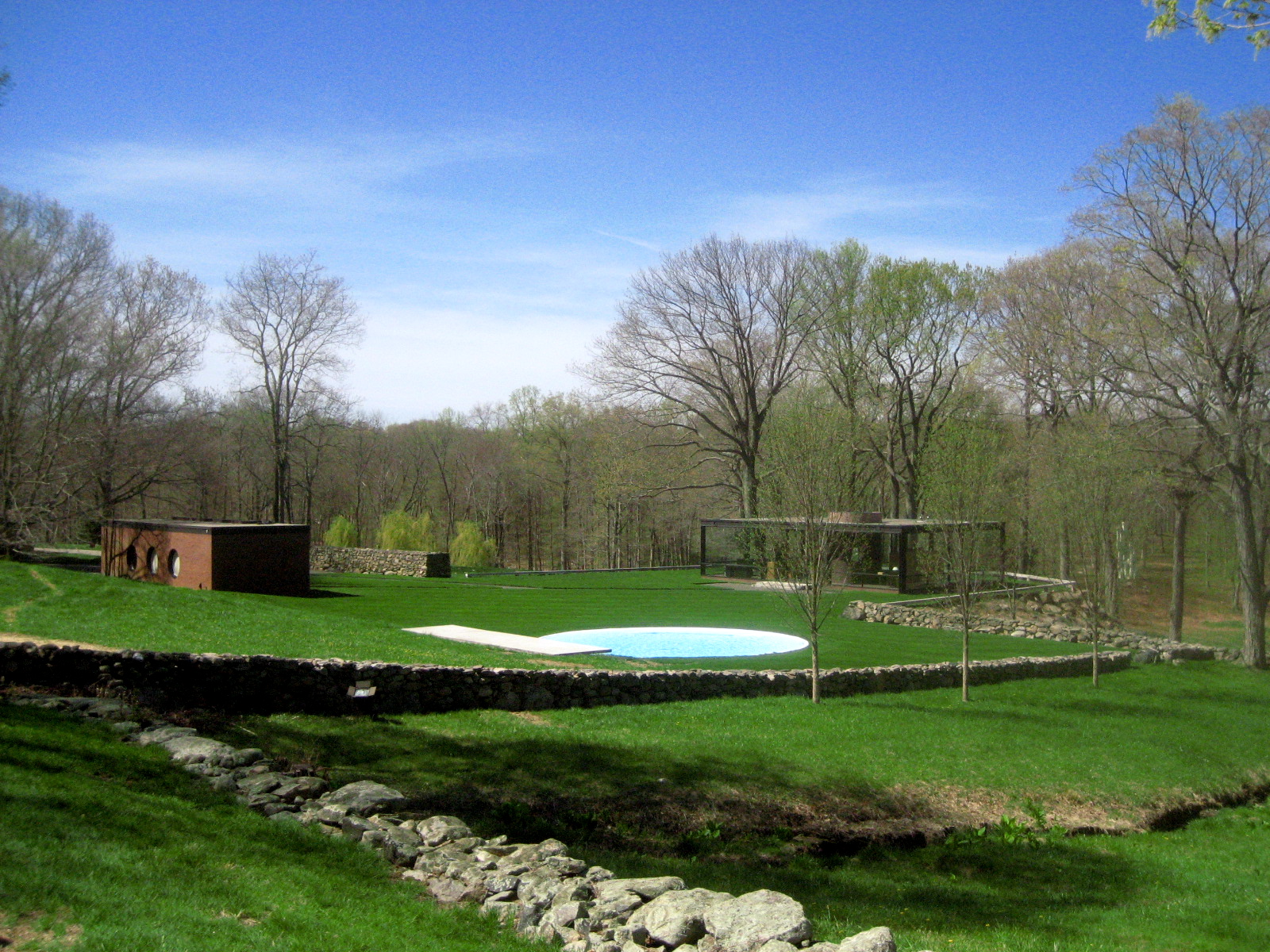
Sometimes it is not necessary that the observer is present outside the house. The mere thought that others can see us makes us feel exposed. “I can feel myself under the gaze of someone whose eyes I do not even see, not even discern. All that is necessary is for something to signify to me that there may be others there,” wrote Jacques Lacan. “The window, if it gets a bit dark and if I have reason for thinking that there is someone behind it, is straightway a gaze. From the moment this gaze exits, I am already something other, in that I feel myself becoming an object for the gaze of others. But in this position, which is a reciprocal one, others also know that I am an object who knows himself to be seen.”
Mies failed to create a house that made its inhabitant feel protected. Farnsworth felt helplessly exposed. The positioning of the furniture had a lot to do with it. Miesian minimalistic interior showcased an ordered geometry. The furniture drew the inhabitant’s gaze to the outside, reminding them of the outside gaze. The house started to dictate how Farnsworth would inhabit the space: the house started controlling her. She wrote that she found “hard to bear the insolence and boorishness of those who invaded the solitude of (my) shore and (my) home…. flowers brought to heal the scars of the building were crushed by those boots beneath the noses pressed against the glass.” Even though she did not meet the trespassers, the crushed flowers provided evidence of their presence.

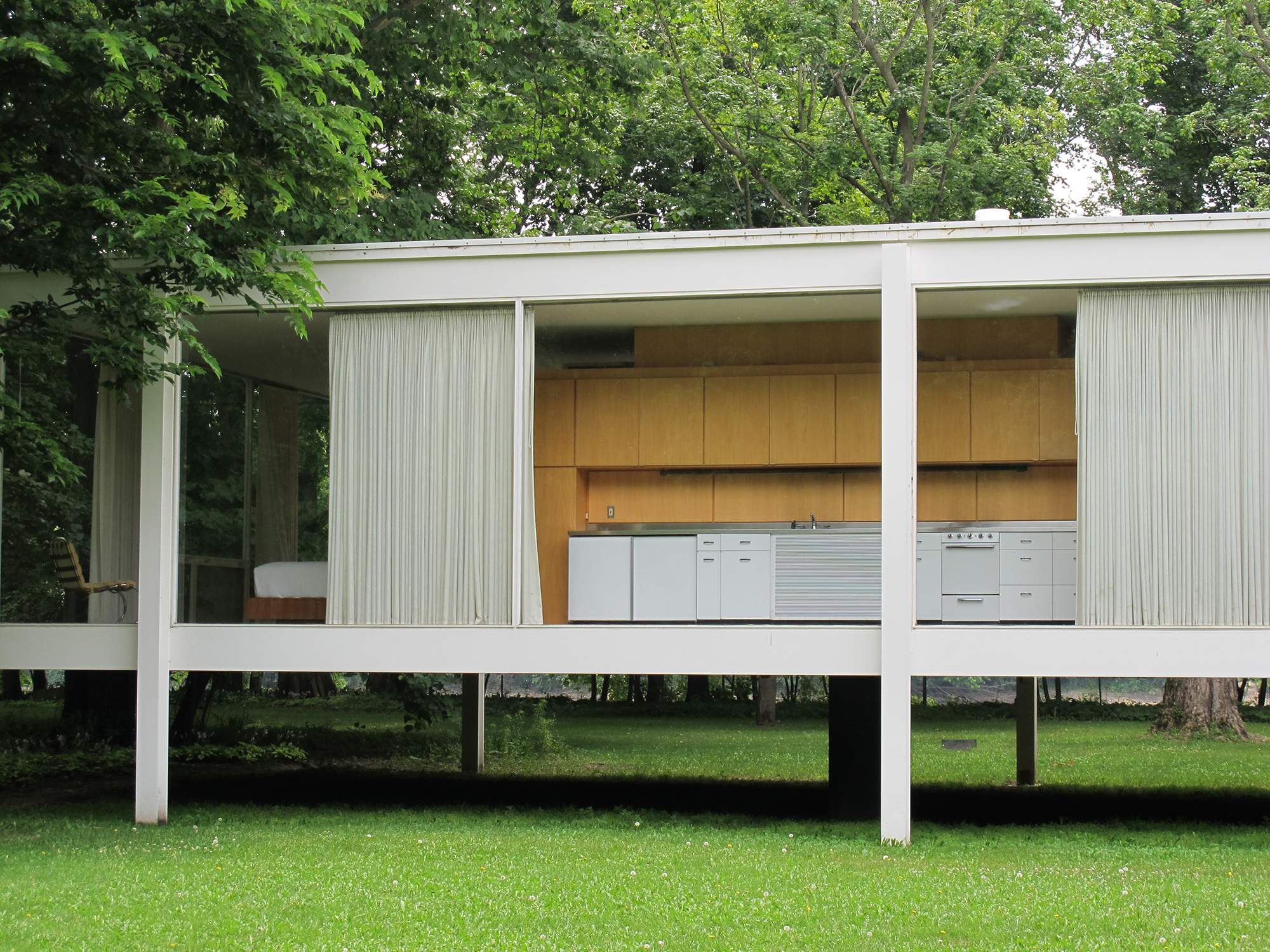
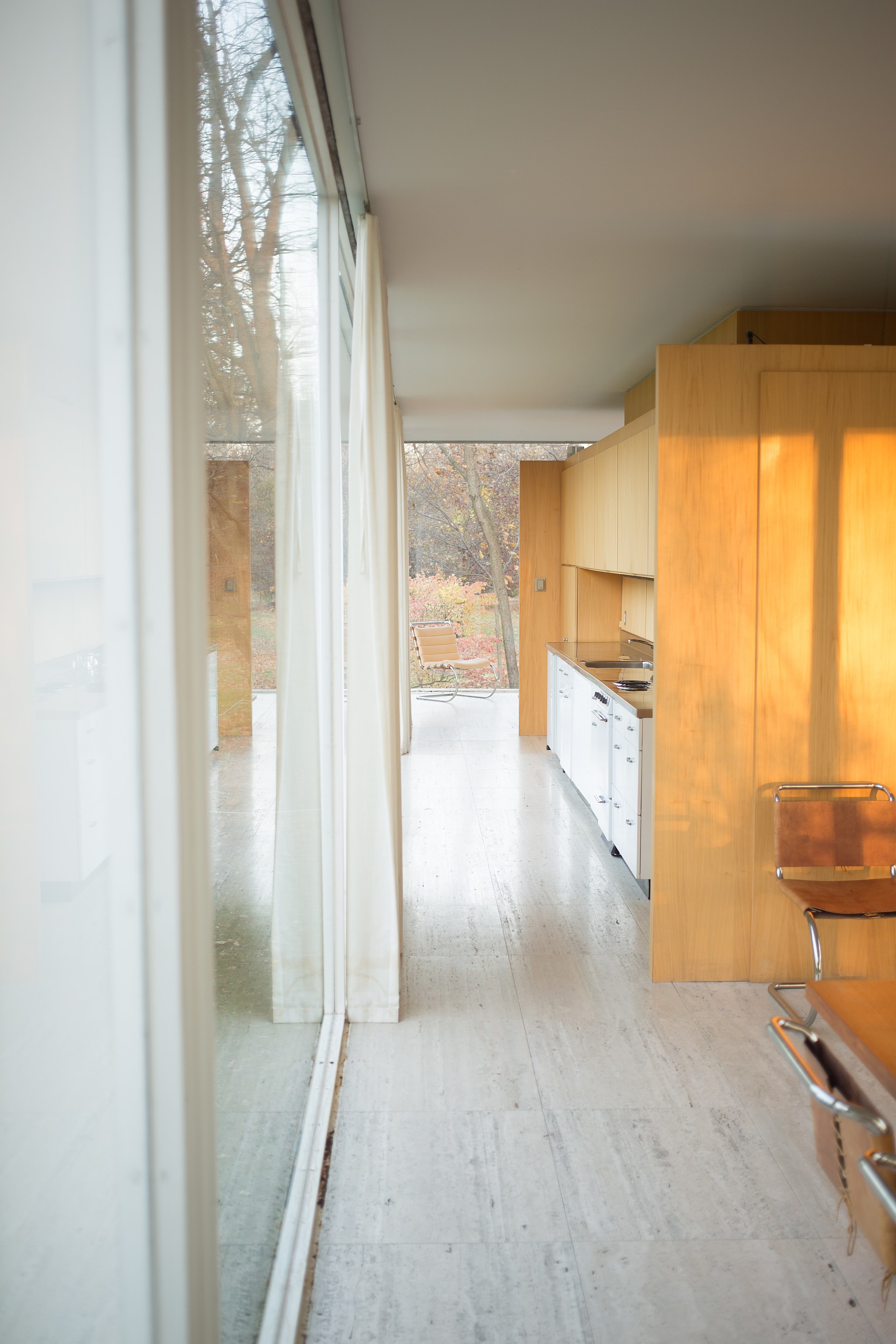
In contrast, the arrangement of furniture in the Glass House allowed for daily chores to take place without being reminded of the outside gaze. Johnson’s furniture arrangement created spaces nested within the interior. The house kept the inhabitant’s gaze directed towards the interior and, unlike the Farnsworth house, did not remind them of the transparency of the glass walls. The design of the Glass House was not restricted to the glazed walls alone: the surrounding landscape screened and denied visual access to the inside of the house. Provision was made to light the exterior of the house during the night. The lights illuminated the lawn and the trees surrounding the house, exposing the outside to the view from the inside.
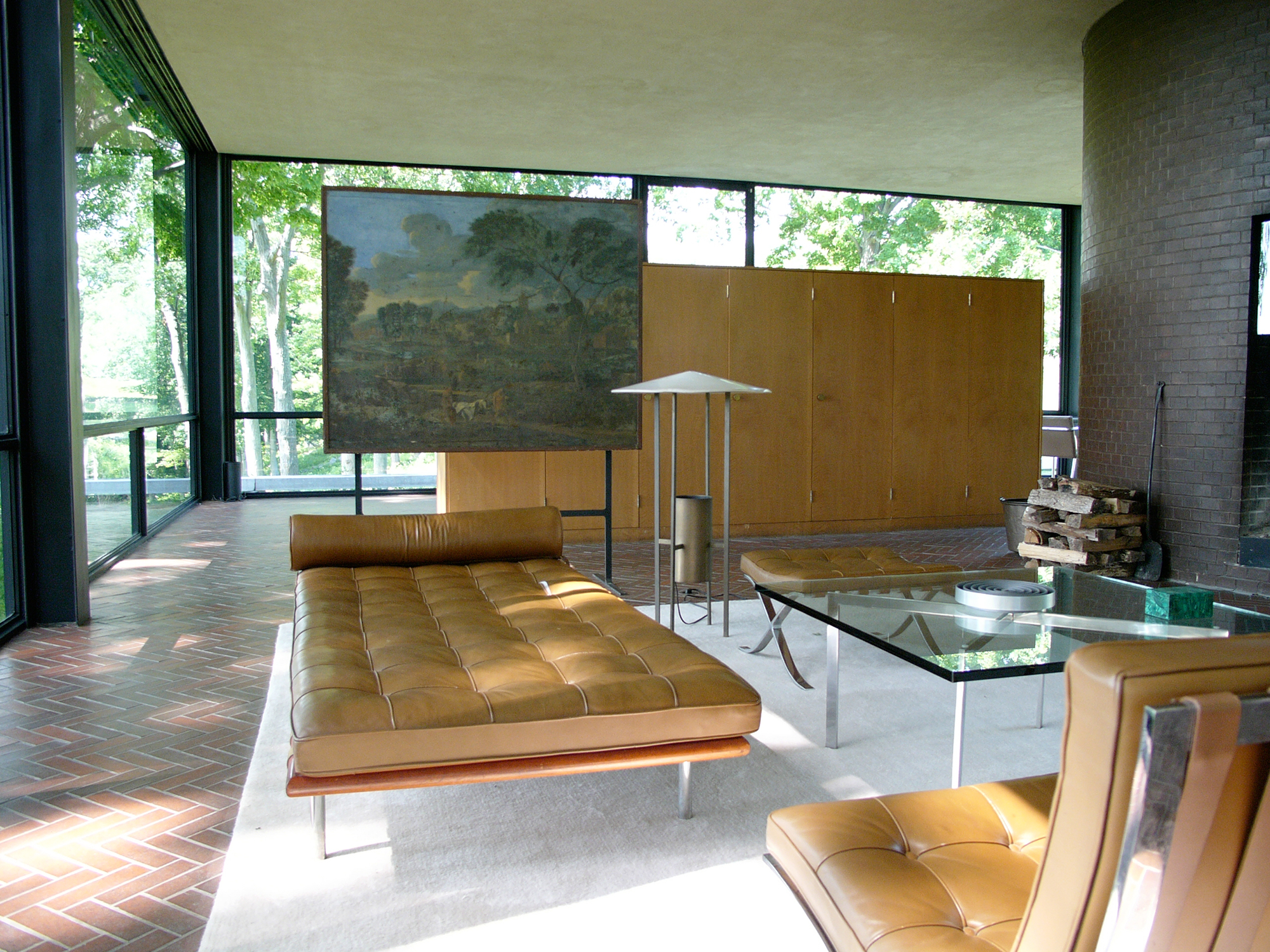


Every person has a certain aspect of their lives that she/he wants to keep private and certain aspects that they are comfortable displaying to the public. Johnson enjoyed the ‘edge of danger’ and the risk of exposure precisely because he created both means to control and escape the gaze. He could oscillate between being the subject and the object as and when he desired. Farnsworth was subjugated by the other subject, her house – the Farnsworth House – and subdued to an object on display.
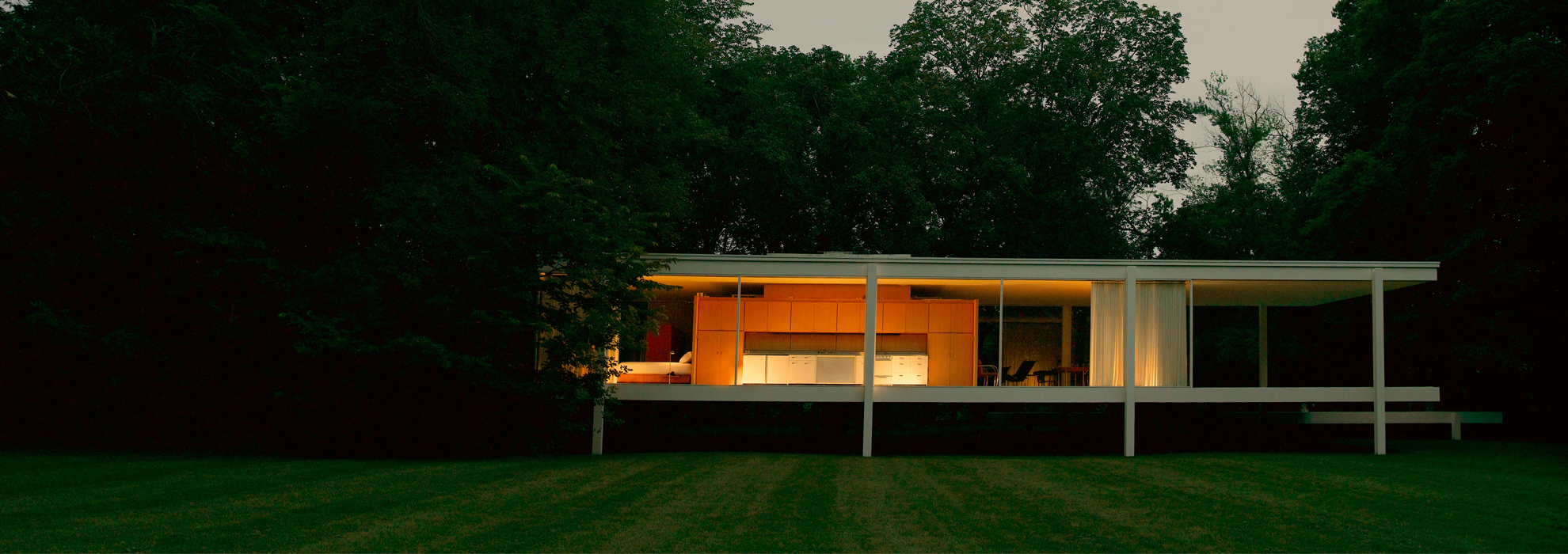

Where both the watcher and the watched were once painfully aware of each other across the pane of transparent glass, the digital window made the audience and the performer less visible to each other. Still, knowing we might be watched is enough to feel watched. Within Facebook, there is an ongoing battle for control of personal information: here is where contemporary Edith Farnsworths and Philip Johnsons negotiate privacy and exposure. Facebook does grant the world – our parents, professors, police officers, other guardian figures – a front-row seat to all of our interests, yet it does offer us the choice to draw the curtains. Privacy filters allow its users to introduce categories, controlling impressions for specific audiences. These are the boundaries that give one a sense of belonging and ownership. The Farnsworth House didn’t come with the curtains, Edith Farnsworth had to install them. The Glass House, ensconced in a private landscape, didn’t need curtains. The ability to have control over one’s personal information, to choose what and when to share, is important here. Boundaries are essential for maintaining integrity.
Yet the glass wall exposes the attitudes of the viewed, as well as the viewer. Farnsworth House and the Glass House challenged the values of the 1950s America. In a time when the conventions of domestic planning were closely related to heterosexual norms of living, these two houses questioned the contested values of gender and sexuality. They also raised questions about the ways residential building typologies reflected patterns of domestic life. They – hopefully – made people realise that a family was not the only type of client a house housed. Social media has been playing a similar role in our lives. With the introduction of social networking sites and monitoring devices, the social attitudes and values of this generation have altered. Digital glass houses reveal diversity and plurality; questioning stereotypes, prejudices, superstitions.
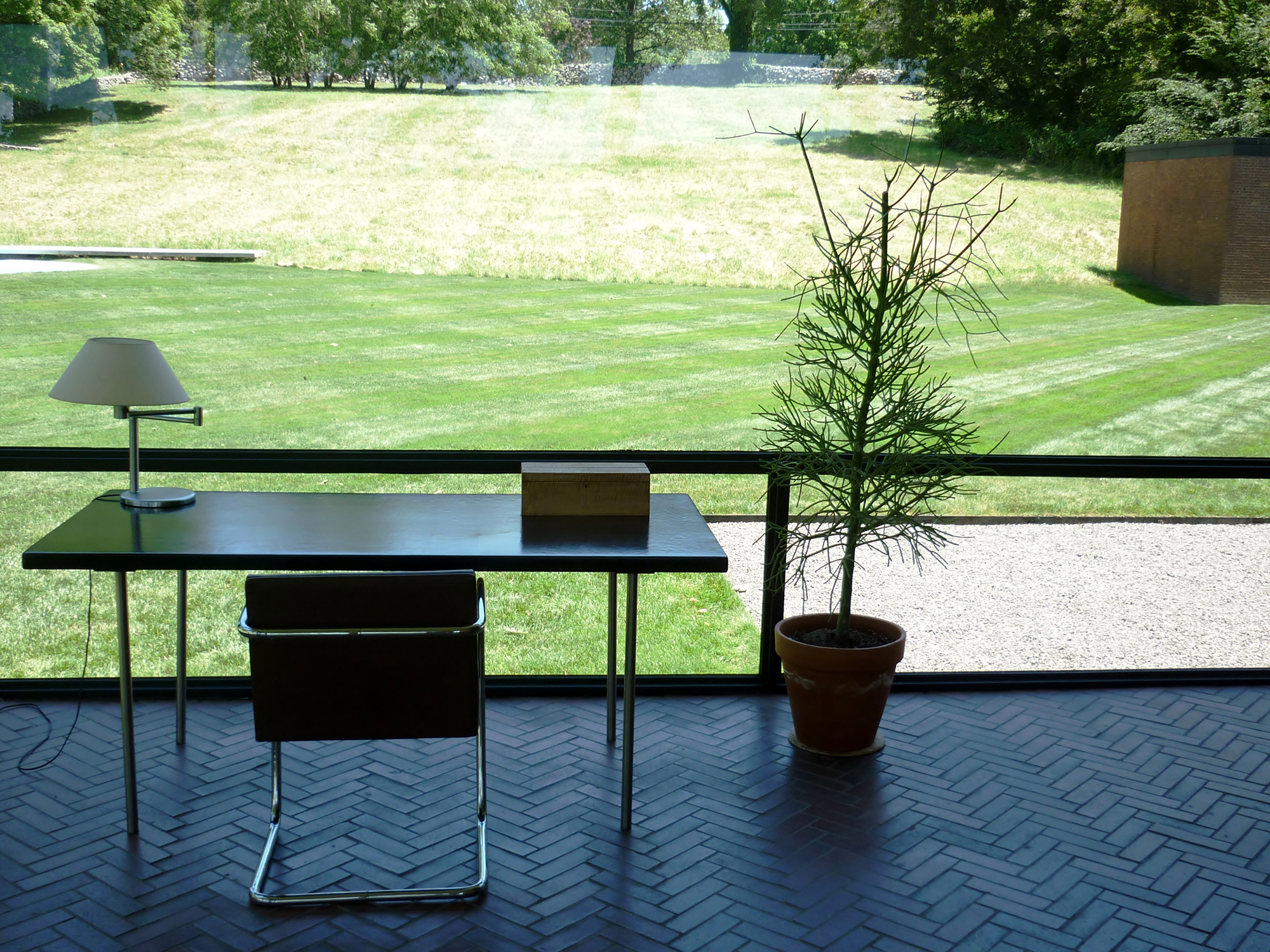
By revealing the exterior and the interior to each other, glass boxes ended up alternating the subject and the object of social gaze. By doing so, they raised questions about the viewer and the viewed. Did the glass houses represent domesticity or challenge it? Perhaps they did both. Do social media really connect people or give us a view into how people connect with each other? We will find out.